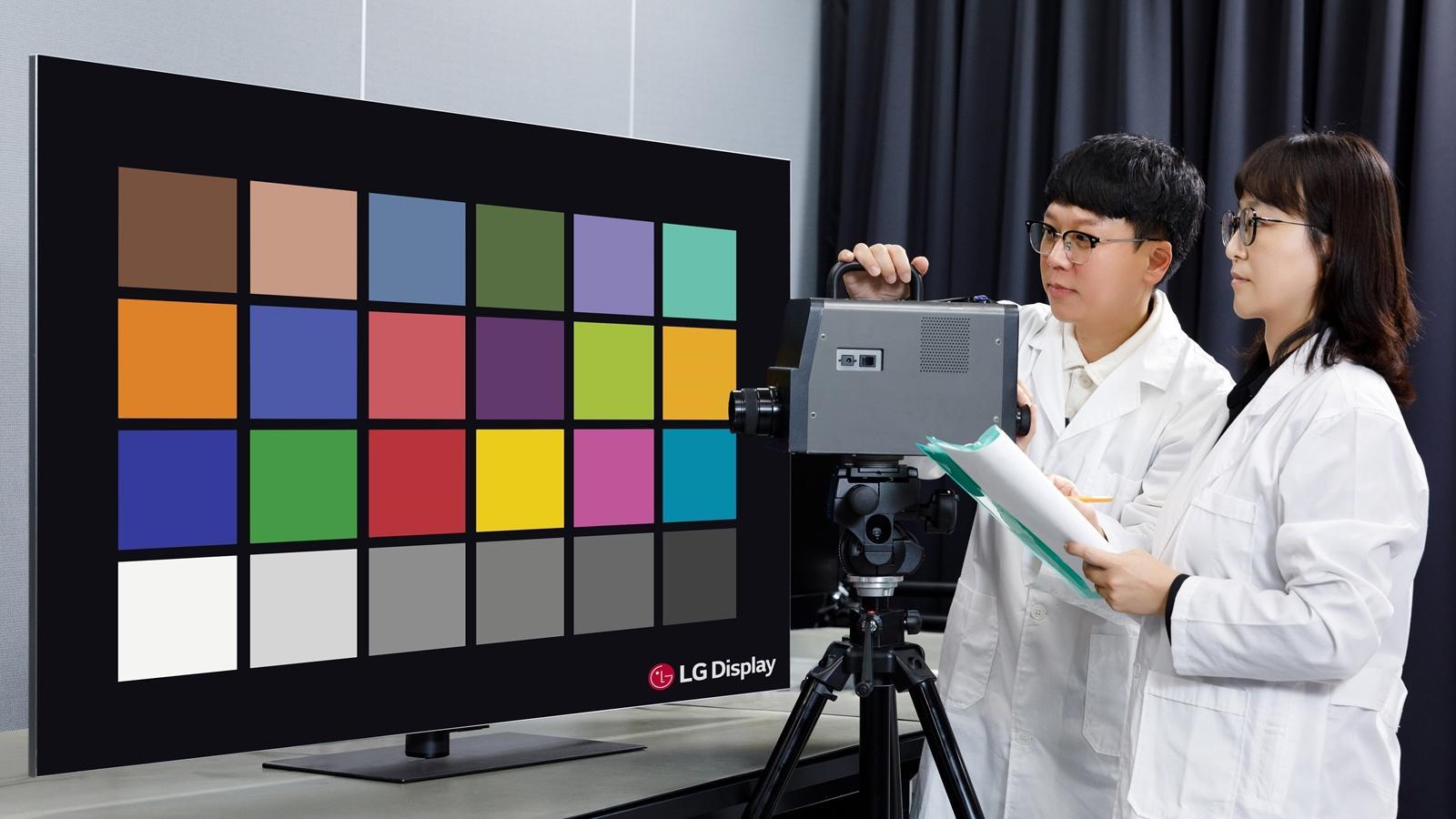LG Display, a world-leading innovator of display technologies, announced that its “colour perception difference measurement method” has been adopted as the international standard technical specification by the International Electrotechnical Commission (IEC). The company was the first in the industry to develop the measurement method.
The IEC is one of three major international standards organisations recognised by the World Trade Organisation, and major global manufacturers measure product performance according to its standards.
Differences in colour perception
In this context, differences in colour perception refer to a phenomenon in which different viewers perceive the same colour differently when it is shown on a display, resulting in colour distortion. It is mainly caused by viewers’ visual characteristics, but the difference can be greater depending on the type of display. For example, the same white colour can be perceived by different viewers to have either a blue or yellow tone.
The smaller the difference, the more accurately the average viewer can see colours as they were intended to be viewed by the content creator. This makes them more reliable for tasks in industries that prioritise high colour accuracy, such as image reading in the medical industry or the video production industry’s need for multiple people to collaborate on the same scene.
Until now, the general opinion has been that the better a display’s colour reproduction, the higher its colour accuracy. But this does not reflect differences in viewers’ colour perception. The significance of the new standard is that it provides consumers with a way to select displays that express consistent and accurate colours.
LG Display’s measurement method quantifies and calculates the difference between the machine-measured colour of seven standard colours and that seen by the human eye under conditions similar to natural light.
High colour accuracy
According to the new standard, LG Display’s large-sized OLED panels have high colour accuracy, with a colour perception difference of only about 10%, the lowest in the industry.
While some high-definition displays potentially cause differences in colour perception by overemphasising red, green, and blue (RGB) pixels, depending on the eye sensitivity of viewers, LG Display’s OLED panels alleviate this phenomenon by using white organic light emitting elements to create a light spectrum that is close to natural light.
Meanwhile, Research Fellow Jang-jin Yoo from LG Display received the IEC 1906 Award on Oct.15 for his leadership in establishing the new colour perception difference measurement method. The IEC grants the award annually to experts based on their outstanding achievements.
Collaboration with Disney Studio LAB
LG Display, along with LG Electronics and Disney Studio LAB, will additionally be presenting a joint research paper on colour perception difference at the world’s most prestigious computer graphics technology conference, SIGGRAPH ASIA 2024, which will be held in Japan this December.
“We will continue to introduce products and technologies that provide differentiated customer value through LG Display’s OLED, which features industry-leading high brightness, infinite contrast ratio, and accurate colour expression,” said Soo-young Yoon, CTO and Executive Vice President of LG Display.


